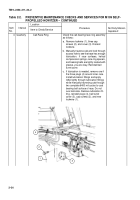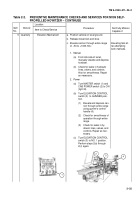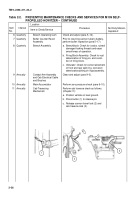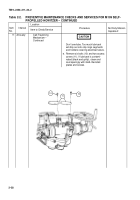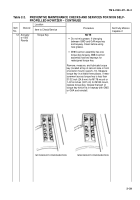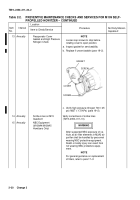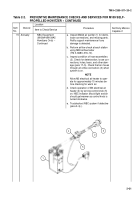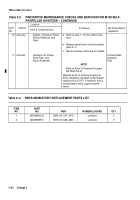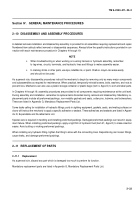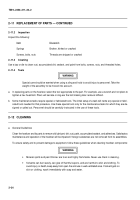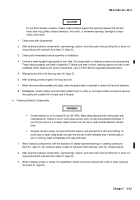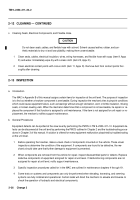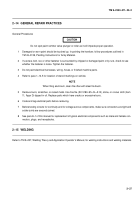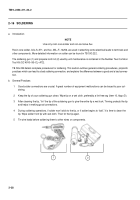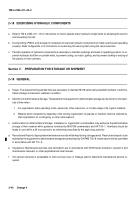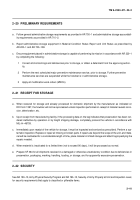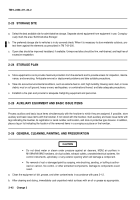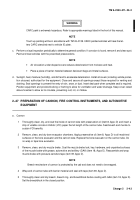TM-9-2350-311-20-2 - Page 95 of 828
TM 9–2350–311–20–2
2–34
2–11 REPLACEMENT OF PARTS — CONTINUED
2–11.2
Inspection
Inspect the following:
Item
Discard if:
Springs
Broken, kinked or cracked
Screws, bolts, nuts
Threads are stripped or cracked
2–11.3
Cleaning
Use a tap or die to clean rust, accumulated dirt, sealant, and paint from bolts, screws, nuts, and threaded holes.
2–11.4
Tools
WARNING
Special care should be exerted when using a sling and hoist to avoid injury to personnel. Take the
weight of the assembly to be moved into account.
a.
In replacing parts on the howitzer, select the tool appropriate to the part. For example, use a wrench and not pliers to
tighten a hex head bolt. Pliers will serrate or dog-ear the bolt making later removal difficult.
b.
Some maintenance tasks require special or fabricated tools. The initial setup of a task will name any special or fabri-
cated tools needed for that procedure. Use these special tools only for the maintenance tasks for which they are de-
signed or called out. Personnel should be carefully instructed in the use of these tools.
2–12 CLEANING
a.
General Guidelines
Clean the howitzer and its parts to remove old lubricant, dirt, rust, paint, accumulated sealant, and adhesives. Satisfactory
maintenance and operation of the howitzer will be impaired if foreign substances are not removed from its assemblies.
To ensure safety and to prevent damage to equipment, follow these guidelines when cleaning howitzer components:
WARNING
•
Mineral spirits and paint thinner are toxic and highly flammable. Never use them in cleaning.
•
Solvents can burn easily, can give off harmful vapors, and are harmful to skin and clothing. To
avoid injury or death, keep away from open fire and use in well-ventilated area. If solvent gets on
skin or clothing, wash immediately with soap and water.
Back to Top

